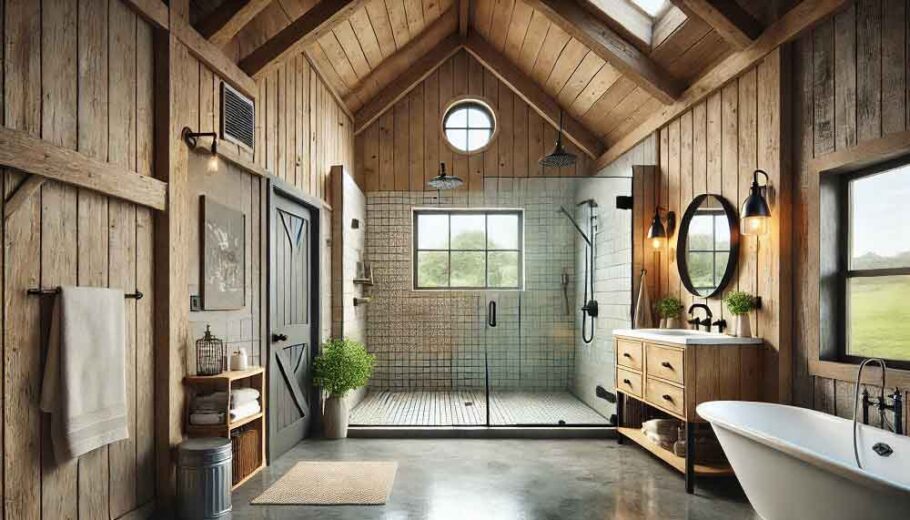Barndominiums—hybrid structures that blend barn-style exteriors with residential or mixed-use interiors—have rapidly evolved from a rural niche to a mainstream housing trend. Known for their open floor plans, affordability, and adaptability, barndominiums are commonly built using post-frame or steel-frame construction. But as energy efficiency and sustainability rise to the forefront of homeowner priorities, Structural Insulated Panels (SIPs) are increasingly entering the conversation.
Engineering with SIPs on a barndominium frame is more than just a building material choice—it’s a design and structural puzzle that requires thoughtful integration. SIPs can transform a barndominium from a drafty metal box into a high-performance home with superior insulation, airtightness, and structural rigidity. This blog post dives deep into what it takes to engineer SIPs into a barndominium frame, the benefits, challenges, and best practices for success.
What Are Structural Insulated Panels (SIPs)?
Structural Insulated Panels are prefabricated building elements composed of three layers:
- Two structural skins (commonly oriented strand board, or OSB).
- A rigid foam insulation core (typically expanded polystyrene, extruded polystyrene, or polyurethane).
These panels serve as both structure and insulation, eliminating the need for conventional studs, batts, and sheathing. SIPs are manufactured in large sections that can be used for walls, roofs, and sometimes even flooring.
When integrated into a barndominium frame, SIPs provide:
- High R-values per inch of thickness.
- Excellent air tightness, reducing heating and cooling loads.
- Fewer thermal bridges compared to traditional framing.
Why Use SIPs in a Barndominium?
Barndominiums are often criticized for being “energy hogs” due to their large open volumes, metal frames, and potential for thermal bridging. SIPs counteract these weaknesses. Here are the key advantages:
- Energy Efficiency
SIPs can deliver R-values ranging from R-15 to R-50, depending on thickness and foam type. This means your barndominium can perform like a modern energy-efficient home while retaining the rustic barn look.
- Speed of Construction
SIPs arrive prefabricated and ready to install, dramatically reducing onsite framing and insulation time. For barndominiums, which already have simplified floor plans, this can cut months off the construction timeline.
- Structural Performance
Although a post-frame or steel-frame barndominium supplies the main skeleton, SIPs add diaphragm strength, distributing lateral loads such as wind or seismic forces. This makes them especially useful in hurricane or tornado-prone regions.
- Design Flexibility
SIPs can be engineered to work with large spans, vaulted ceilings, and open spaces—hallmarks of barndominium architecture.
- Sustainability
Reduced energy use, less construction waste, and the ability to integrate renewable energy systems make SIPs an environmentally conscious choice.
The Engineering Puzzle: SIPs Meet Barndominium Frames
The challenge lies in integrating SIPs into a barndominium’s structural system. Barndominiums are usually built on post-frame systems (wooden posts and trusses) or steel-frame systems (I-beams and metal girts). Neither system was originally designed with SIPs in mind, so engineering solutions must bridge the gap.
- Load Path Considerations
A barndominium frame must transfer vertical and lateral loads to the foundation. SIPs, while structurally capable, need to align with the frame so loads are properly distributed. Engineers must:
- Ensure SIPs bear against posts, beams, or girts without crushing the foam core.
- Use splines, blocking, or ledger systems to integrate panels securely.
- Design for differential movement if SIPs are combined with steel, which expands and contracts differently than wood.
- Attachment Methods
How SIPs attach to the frame depends on the structural system:
- Post-frame barndominiums: SIPs are often “infilled” between posts, acting as large insulated wall sections. Connection details include screws through OSB skins into framing or splines that tie adjacent panels.
- Steel-frame barndominiums: Special steel-to-panel fasteners or intermediary wood nailers may be needed. A common technique is to weld steel angles or channels to the frame, into which SIPs are set.
- Thermal Bridging Challenges
Steel is highly conductive, which can undermine the insulation value of SIPs. To minimize this:
- Install thermal breaks (foam gaskets or insulated spacers).
- Use exterior insulation layers to cover exposed steel.
- Pay extra attention to junctions like roof-to-wall and wall-to-foundation transitions.
- Air and Moisture Management
Barndominiums are notorious for condensation problems because of their large metal surfaces. SIPs, being airtight, help control this—but only if installed correctly. Engineers must ensure:
- Proper sealing at panel joints using foam sealant, gaskets, or tape.
- Vapor barrier strategies aligned with local climate conditions.
- Ventilated roof assemblies in humid or cold regions.
- Fire and Code Compliance
While SIPs are structurally sound, building codes often require additional finishes for fire safety. For barndominiums:
- Interior SIP surfaces are usually covered with gypsum board for fire resistance.
- Exterior finishes can range from steel siding to brick veneer, depending on local requirements.
SIPs in Roof Systems: Vaulted Ceilings Made Easy
Barndominiums often feature high, vaulted ceilings—sometimes extending two stories. SIPs are an excellent choice for roof assemblies because:
- They can span longer distances than conventional trusses with insulation.
- They reduce air leakage at the ceiling, a common energy-loss point.
- They can be prefabricated to match roof pitches, simplifying installation.
For steel-frame barndominiums, SIP roof panels can sit on top of steel rafters, using steel connectors or nailers. For post-frame, they can replace traditional trusses altogether, creating a clean vaulted interior without additional framing.
Cost Considerations
SIPs come with higher upfront material costs compared to traditional framing and batt insulation. However, when engineering efficiency, reduced construction time, and long-term energy savings are factored in, SIPs often prove competitive.
- Material cost: $7–$12 per square foot (wall surface).
- Installation savings: Fewer labor hours due to prefabrication.
- Operational savings: 30–50% lower heating and cooling costs over the life of the building.
For barndominiums, which often include expansive square footage, the energy savings can offset the higher initial investment within a few years.
Case Study: A SIP-Enhanced Barndominium
Imagine a 2,500-square-foot post-frame barndominium in Texas. The owner chooses SIP walls and roof instead of batt-insulated stud walls. The results:
- A tighter building envelope, reducing HVAC loads by 40%.
- A faster build—framing and insulation complete in less than three weeks.
- Comfort improvements: consistent indoor temperatures, no drafts, and reduced noise from wind and rain.
While the upfront cost was about 15% higher, the homeowner’s utility bills dropped significantly, leading to a projected payback period of 6–8 years.
Best Practices for Engineers and Builders
- Work with SIP Manufacturers Early
Panel dimensions, window openings, and roof pitches must be coordinated before panels are fabricated. Late changes can be costly. - Prioritize Connection Details
The success of SIP integration depends on precise joint sealing, attachment methods, and thermal break design. - Consult Structural Engineers
Not all SIP installations are alike. A licensed engineer should review load paths, particularly in high-wind or seismic regions. - Address HVAC Sizing
Because SIP barndominiums are airtight and well-insulated, HVAC systems must be downsized compared to conventional builds to prevent short cycling. - Train the Crew
Installing SIPs requires different skills than traditional framing. Crews should be trained in proper lifting, sealing, and fastening techniques.
The Future of SIP Barndominiums
As energy codes tighten and homeowners demand lower operating costs, SIPs are poised to become a key player in barndominium construction. The combination of rustic charm, open-plan design, and cutting-edge efficiency creates a best-of-both-worlds scenario.
While integrating SIPs into a barndominium frame presents engineering challenges, the benefits in comfort, sustainability, and long-term value make it an investment worth considering. With careful planning, expert engineering, and skilled installation, SIP barndominiums can set the standard for next-generation rural and suburban living.
Conclusion
Engineering with Structural Insulated Panels on a barndominium frame is not just about attaching panels to posts or steel beams—it’s about rethinking how these buildings perform. SIPs add strength, reduce energy consumption, and improve comfort in ways that align perfectly with modern living standards.
For homeowners, SIPs can turn a barndominium from a rustic workshop-home hybrid into a truly high-performance residence. For engineers and builders, SIPs present both challenges and opportunities—a chance to innovate at the intersection of tradition and technology.
In the end, barndominiums built with SIPs represent more than just a trend. They’re a glimpse into the future of efficient, adaptable, and sustainable housing.

